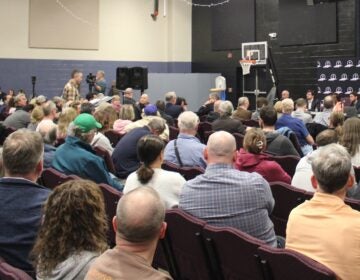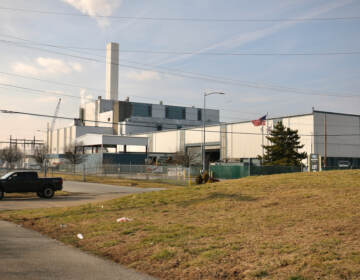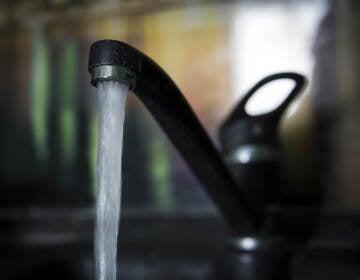Bringing Jenkintown Creek back to nature, to improve water quality downstream
A section of the creek will be moved out of a concrete pipe to clean it and slow it down, reducing flooding and improving water quality downstream.
Listen 1:56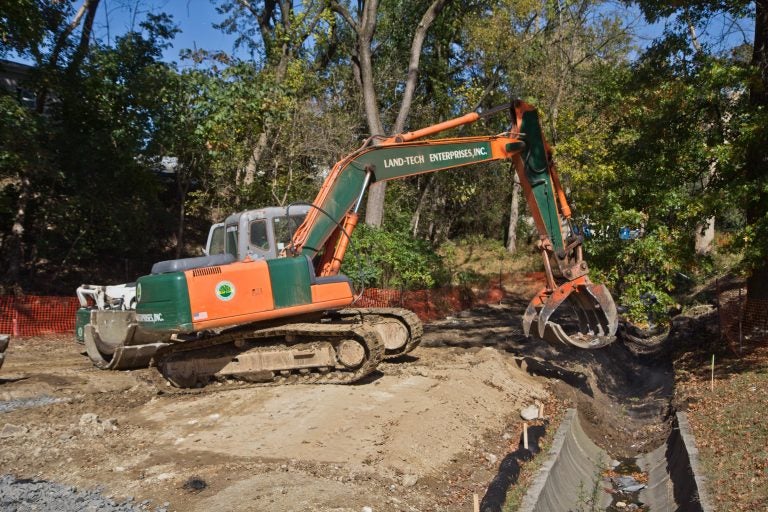
An excavator removes concrete pipe as part of a plan to restore a waterway at Conklin Recreation Center. (Kimberly Paynter/WHYY)
Jenkintown Creek looks more like a ditch near a recreation center. When it’s not raining, a tiny stream of water flows down into a concrete pipe next to Cheltenham Township’s Charles D. Conklin Jr. Pool, which is surrounded by turf and has no shadow.
But a new restoration project will remove 235 linear feet of concrete to let the creek flow freely through a meandering bank surrounded by bushes and trees.
“Instead of the channel being straight, as is in its current condition, it’s going to flow through and zigzag across this one acre of landscape,” said Susan Harris, a project manager with the Tookany/Tacony-Frankford Watershed Partnership, providing “opportunity for sediment to drop out of the water.”
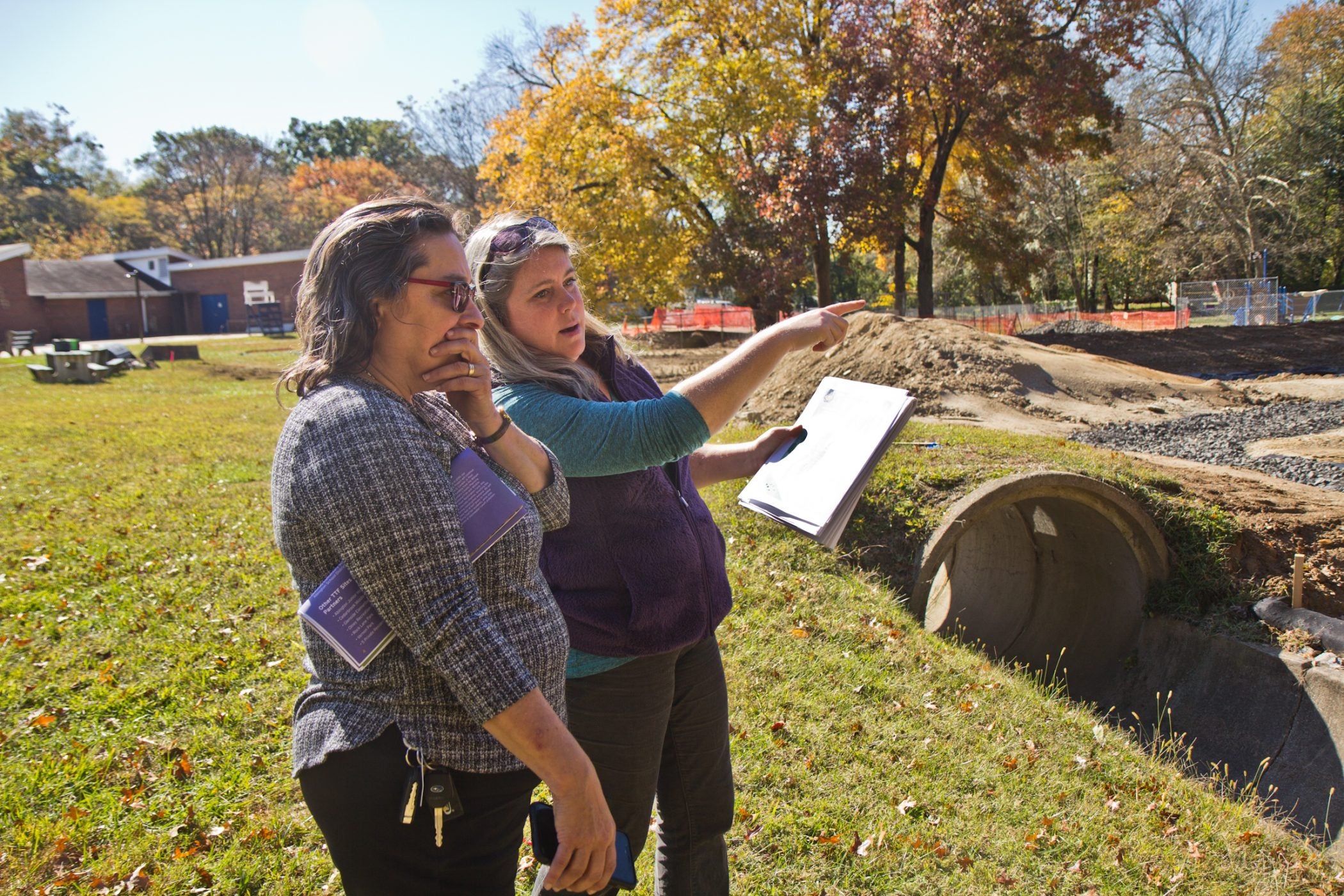
Water in the creek comes mostly from rain running off 42 acres upstream in Montgomery County, including roads, 144 small-lot residential properties, six condominium complexes, and commercial properties, according to Harris. Stormwater catches everything on the surface — pet waste, trash, oils, fertilizers — and those pollutants go straight downstream to Philadelphia and eventually into the Delaware River.
With the restoration, plants, stones, and soil will filter the water and absorb some of it — important when stormwater and sewer waste are competing for space in Philadelphia’s combined sewer system. When it overflows, raw sewage goes straight into the waterways.
“So now, all that will be slowed down, and we’ll have less volume contributing to it. And when there’s less volume, there’s less likely to be that combined sewer overflow,” said Harris.
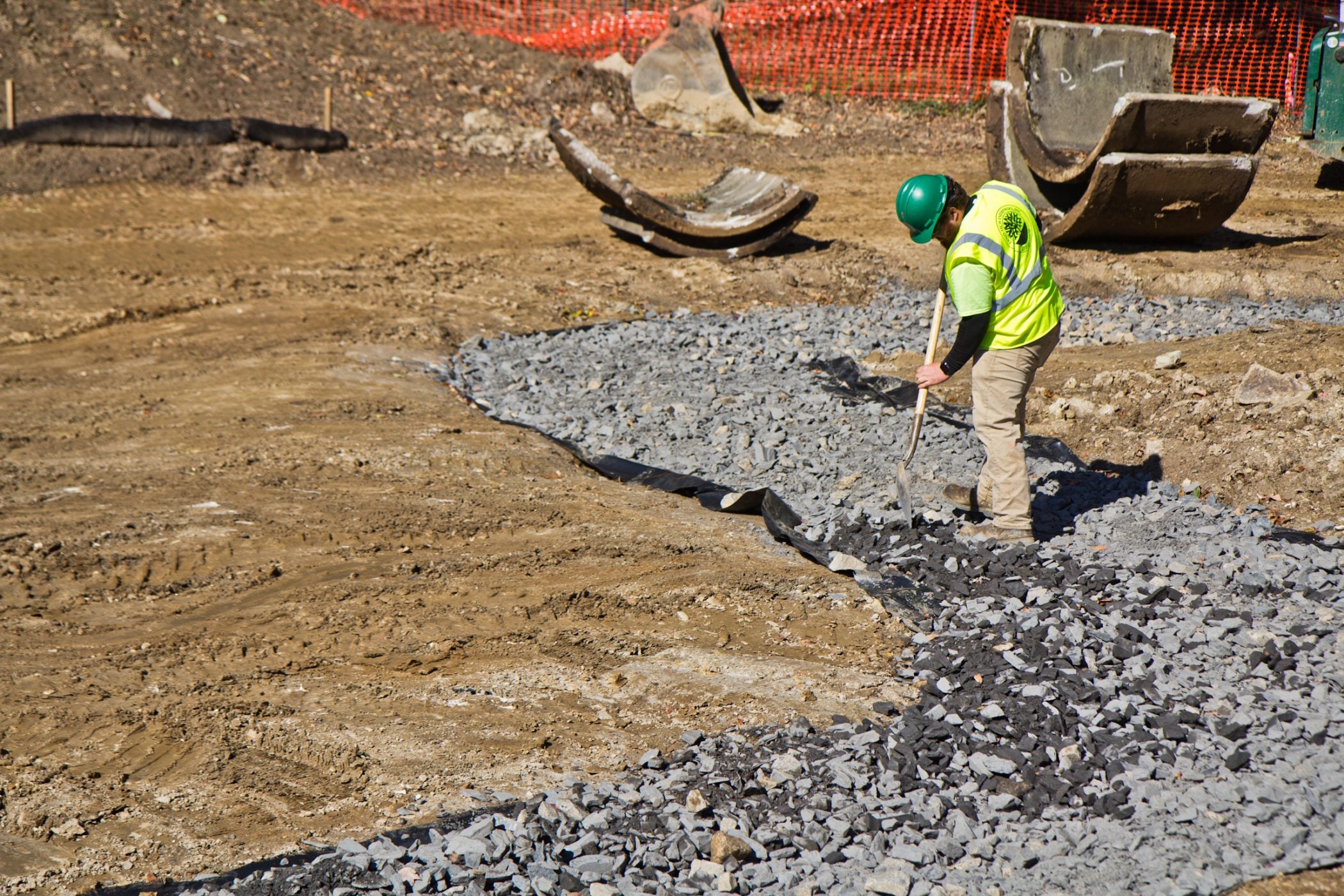
This creek, like many in Philadelphia, was channelized for health and safety reasons in the 1950s. The goal, Harris said, was to remove polluted stormwater as quickly as possible. But as watersheds develop and there is less ground to absorb stormwater, the solution often creates problems downstream.
Jenkintown Creek flows into Tookany Creek, which flows into Tacony-Frankford Creek, which flows into the Delaware River.
Julie Slavet directs the Tookany/Tacony-Frankford Watershed Partnership (TTF). She said a variety of partners have improved Jenkintown Creek since 2014, but identifying sites to manage stormwater has been hard because its watershed is 98% developed.
Even though the waterway becomes contaminated again downstream, Slavet said, reducing the volume and speed of the creek in Cheltenham prevents bank erosion and flash flooding in neighborhoods farther down.
“If we can improve this little creek significantly, then it will start to impact the Tacony because there won’t be all this runoff running into the Tacony. And then, it will take years for the city to deal with the combined sewer overflow, but this will mean that this job has already started,” Slavet said. “And it makes more sense to be cleaning Philadelphia’s water higher up than it does spending so much money at the Delaware River.”
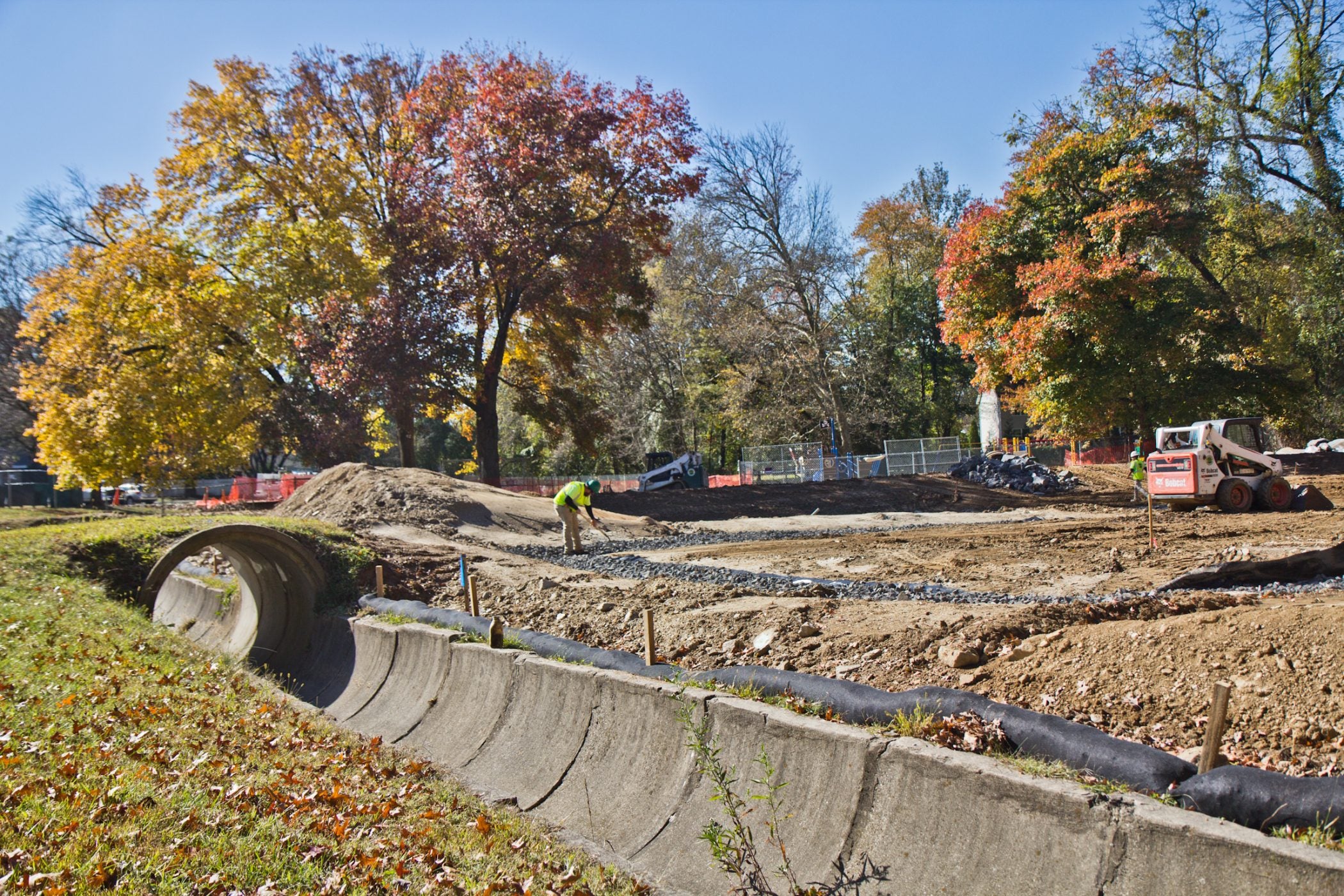
The project was designed and managed by Cheltenham Township and the TTF, and primarily funded by the Montgomery County Planning Commission and the National Fish and Wildlife Foundation.
The restoration will be completed by January. Residents are invited to plant bushes and trees along the banks of the now-natural creek next spring. Project supporters hope bees, butterflies, and birds will follow.
WHYY is your source for fact-based, in-depth journalism and information. As a nonprofit organization, we rely on financial support from readers like you. Please give today.


